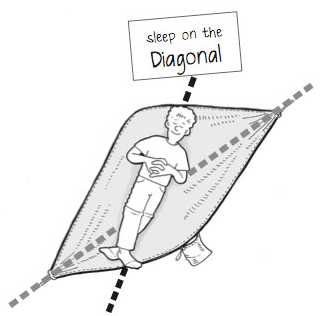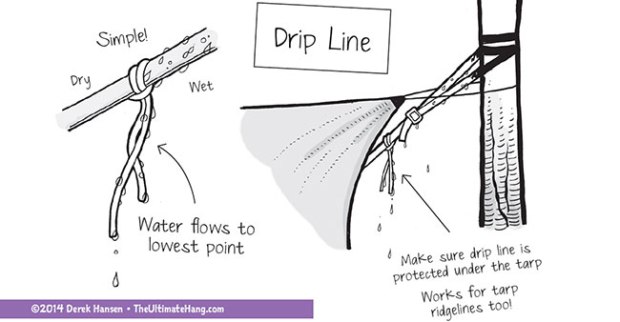8 Expert Tips for Comfortable Hammock Camping

Recreational hammocks are fast becoming “must-haves” for Scouting campouts, and many are small and light enough that folks bring them on day hikes, as well. Some of the primary reasons people like hammocks are because they are fun, comfortable to lounge in and pretty quick to set up. Whether you’re a veteran “hanger” or just starting out, here are eight tips to make the most of your hammock.
1. HANG YOUR HAMMOCK WITH A GOOD SAG
Too many people attempt to string up a hammock as tightly as possible between anchor points. This can cause a cocooning effect that can squeeze your shoulders and bow your back uncomfortably. Instead, try hanging your hammock with a good sag, as in a smiley face. If you really want to geek out, a good starting angle is 30-degrees from horizontal. This is the most important tip to make your hammock more comfortable. A deep sag also lowers the center of gravity, making the hammock more stable and harder to fall out of.
2. LAY DIAGONALLY ACROSS THE HAMMOCK

Once you’ve got a good sag (see tip No. 1), you can lay diagonally across the fabric. You’ll be amazed at how comfortable this will feel as your head and feet drop down and your body reclines ergonomically flat across the fabric. This is how hammocks were designed to work.
3. RAISE YOUR FOOT END HIGHER
In some cases, your body may naturally slide to the middle of your hammock, which can sometimes be uncomfortable. To prevent any sliding, try hanging the foot side of the hammock about 8 to 10 inches higher. This helps keep your heavier torso from sliding into the middle.
4. TRY A KNEE PILLOW
Depending on the size of your hammock (and how tall you are), you may feel a tight ridge under your legs when lying diagonally. This can cause hyper-extension on your knees. Ouch! To relieve this pressure, place some padding under your knees. Extra clothes or a small pillow would work great. (Remember: Longer, not wider, hammocks are generally more comfortable, allowing you to lie diagonally without leg hyperextension.)
5. USE A BUG NET
While some jungle hammocks come with sewn-on bug netting, simple recreational hammocks do not. No one enjoys bugs buzzing around your face, especially if those bugs bite. A full-length bug net can completely surround your hammock and create a roomy pod to read, rest and relax.
6. USE A SLEEPING PAD OR UNDER QUILT
A lot of folks think all you need is a sleeping bag to stay warm in a hammock. After all, you’re off the ground, so you don’t need a pad for comfort. What that pad does help with, however, is warmth. You’ll compress the sleeping bag insulation under your body in a hammock just like you would on the ground, so you’ll feel cold in a hammock without some uncompressed insulation beneath you. To keep the sleeping pad from slipping out from under you, try putting it inside your sleeping bag.
7. USE A DRIP LINE

On really rainy days, water can seep down your suspension and get your hammock wet. To prevent this, tie a drip line on your suspension, positioned under your tarp (you are using a tarp, right?). See illustration for more details.
8. FOLD YOUR HAMMOCK INTO A CHAIR
Sitting in a hammock can feel like a deep bucket seat. This can be comfy, but if you want a chair that doesn’t cut the circulation off your knees and lets you sit up squarely, take the edge of the fabric and fold it toward the center of the hammock. Sit down on this doubled-over area for a nice, flat seat.
Do you have other tips for maximizing the comfort in your hammock? Please share them in the comments below.
HAMMOCK SAFETY
Hammock camping can be a fun alternative to using a tent. Stay safe by following these safety guidelines, suggested by the BSA Health and Safety team:
- To prevent dangerous falls, hang your hammock no more than 3 feet off the ground.
- Do not hang your hammock over water features, chasms in the ground, or above tables or sharp objects.
- Do not participate in hammock stacking, in which multiple hammocks are stacked vertically.
- Just like a tent, do not keep food in your hammock.


No comments:
Post a Comment